Drawing Secrets: Learning to Simplify Complex Scenes
Are you an artist struggling to capture the essence of intricate scenes? You’re not alone! Many artists find themselves overwhelmed by the multitude of details present in complex compositions. The good news is that there are effective techniques to simplify these scenes, making them not only easier to draw but also more enjoyable to create. In this article, we will explore essential methods for breaking down complicated visuals into manageable components. By mastering these skills, you can enhance your drawing abilities and foster your creativity through simplification.
Before we dive into techniques, it’s important to recognize what makes a scene complex. Complexity in drawing can stem from various elements, such as intricate patterns, overlapping objects, and diverse textures. Understanding these components is crucial for artists who wish to simplify their work. Start by observing your scene closely. Ask yourself questions like:
- What are the main subjects in this scene?
- Are there any repetitive patterns that can be simplified?
- How do the elements interact with each other?
By analyzing these aspects, you can identify the core elements that contribute to the scene's complexity and focus on them, rather than getting lost in the details.
Now that we understand complexity, let’s explore some practical techniques that can help you simplify complex scenes without sacrificing their essence. These methods will streamline your drawing process and make it much more enjoyable.
One of the most effective ways to simplify a scene is by breaking it down into basic shapes. Think of your subject as a collection of geometric forms—squares, circles, triangles, and rectangles. This technique allows you to create a solid foundation for your drawings. For instance, when drawing a figure, start with basic shapes to outline the head, torso, and limbs. Once you have the basic structure, you can gradually add details. This method not only makes the drawing process easier but also helps maintain proper proportions.
Implementing a grid system can be an invaluable tool for artists looking to maintain proportions while simplifying complex scenes. By overlaying a grid on your reference image and your drawing surface, you can break the scene into smaller, more manageable sections. This technique helps you focus on one square at a time, making it easier to capture details without feeling overwhelmed. To use this method effectively, follow these steps:
- Draw a grid on your reference image.
- Draw a corresponding grid on your drawing paper.
- Focus on one square at a time, translating what you see into your drawing.
Contour drawing is another fantastic method for simplifying complex forms. This technique emphasizes the outlines of your subjects, allowing you to capture their essence without getting bogged down by intricate details. As you practice contour drawing, focus on the lines that define the shape of your subject. This approach enhances your observational skills and helps you understand the relationship between different elements within the scene.
Knowing when and how to reduce detail is essential for effective simplification. Sometimes, less is more! Look for areas in your scene where you can omit unnecessary elements. For instance, if you’re drawing a crowded street, you don’t need to include every individual; instead, suggest movement and life with just a few figures. This strategic reduction helps maintain the essence of your scene while keeping it visually appealing.
Color and value are pivotal in simplifying complex scenes. By using these elements strategically, you can enhance clarity and focus in your artwork. Consider using a limited color palette to avoid overwhelming the viewer. Additionally, playing with values—light and dark shades—can help create depth and draw attention to specific areas of your composition.
Establishing focal points is crucial for guiding the viewer’s eye and simplifying the overall composition. Think of your artwork as a story; what do you want to highlight? Use contrasting colors, sharper details, or unique shapes to emphasize key areas within your complex scene. This technique not only simplifies the composition but also enhances the overall impact of your artwork.
Negative space can be a powerful tool for simplification. By incorporating negative space effectively, you can enhance composition and reduce visual clutter. Negative space refers to the area surrounding your main subjects. By paying attention to this space, you can create balance and harmony in your artwork. Remember, the empty spaces can be just as important as the objects themselves!
Q: How can I improve my observational skills for drawing?
A: Practice contour drawing and spend time sketching from life. Focus on the shapes and relationships between objects.
Q: What is the best way to choose a color palette?
A: Start with a limited palette of colors that complement each other. Experiment with different combinations to find what works best for your scene.
Q: How do I know when to simplify a detail?
A: If a detail doesn’t contribute to the overall composition or message of your artwork, consider omitting it to maintain focus.
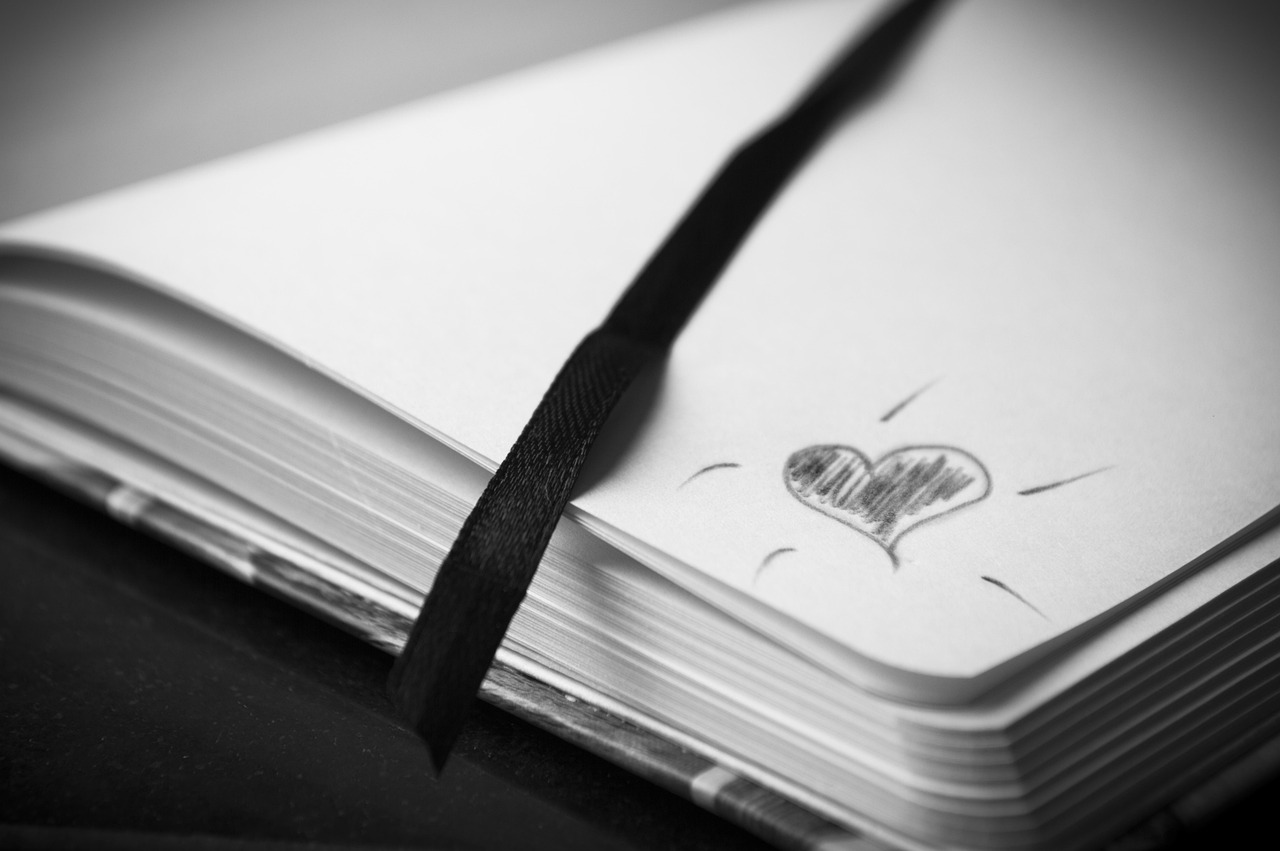
Understanding Complexity in Drawing
When it comes to drawing, complexity can often feel overwhelming, like trying to untangle a ball of yarn that’s been tossed around. But understanding what makes a scene complex is the first step towards mastering it. Complexity in drawing stems from various elements, including shapes, textures, lighting, and the arrangement of objects. By breaking these down, artists can gain clarity and control over their work.
One of the key aspects to recognize is that complexity isn't just about the number of elements in a scene; it's also about how these elements interact with each other. For instance, consider a bustling street scene. It may contain numerous buildings, people, and vehicles, but the real challenge lies in understanding the relationships between these components. Are the buildings towering over the pedestrians? Is there a sense of motion in the cars? By analyzing these relationships, artists can simplify their approach and focus on what truly matters.
Additionally, it's important to identify the foundational components of any scene. Here are some critical elements to consider:
- Shapes: Every object can be broken down into basic geometric forms. Recognizing these shapes can help in forming a solid structure for your drawing.
- Textures: Different surfaces can add complexity. Understanding how to represent textures can simplify the way you depict various materials.
- Light and Shadow: The interplay of light and shadow can create depth and dimension, but it can also complicate a scene. Simplifying this aspect can enhance clarity.
- Composition: How elements are arranged in your drawing affects its complexity. A well-balanced composition can lead to a more straightforward approach.
Recognizing these components is like having a map in a maze—it guides you through the intricate pathways of your drawing. By focusing on these aspects, you can start to dissect complex scenes into manageable parts, allowing for a more enjoyable and less stressful drawing experience. Remember, every artist faces complexity at some point, but the ability to simplify is what sets apart a skilled artist from a novice.
In conclusion, understanding complexity in drawing is about more than just identifying elements; it’s about analyzing their interactions and how they contribute to the overall scene. By honing this skill, you’ll find that what once seemed daunting can become an exciting challenge. So grab your pencil, and let’s dive into the world of simplification!

Techniques for Simplification
When it comes to drawing, simplification is not just a technique; it's an art form in itself. Many artists feel overwhelmed by the complexity of the scenes they want to capture, but the beauty lies in breaking down these intricate details into manageable parts. Think of it like assembling a puzzle: you wouldn’t dive into the whole picture at once, right? Instead, you’d start with the corners and edges, gradually filling in the middle. In drawing, you can apply similar strategies to simplify your approach. Let's explore some effective techniques that can help you streamline your drawing process while still retaining the essence of the scene.
One of the most effective methods for simplification is breaking down shapes. Every complex form can be reduced to basic geometric shapes. For instance, a human figure can often be represented by a collection of circles, ovals, and rectangles. By focusing on these fundamental shapes, you create a solid foundation for your drawing. This technique not only makes the initial sketch easier but also helps you maintain proper proportions as you build upon those shapes. Imagine trying to draw a car; instead of getting bogged down by the details of the headlights and wheels, start with a rectangle for the body and circles for the tires. Once you have those basic shapes down, you can refine them into the car's final form.
Another powerful tool in your arsenal is the use of grids. Grids can serve as a structured framework that guides your drawing, ensuring that proportions are accurate and that complex scenes are simplified. By overlaying a grid on your reference image and your drawing surface, you can focus on one square at a time. This method allows you to break down the scene into manageable sections, making it less daunting. For example, if you're drawing a landscape with mountains, trees, and clouds, a grid helps you concentrate on one element at a time without getting overwhelmed by the overall composition.
Additionally, contour drawing techniques are excellent for simplifying complex forms. Contour drawing emphasizes the outlines of the subject, which helps you focus on the shapes and relationships between different elements. By practicing this technique, you train your eyes to see the essential lines and curves that define your subject. Try doing a quick contour sketch of an object without lifting your pencil from the paper. This exercise forces you to observe closely and simplifies the drawing process by highlighting the most important features.
As you become more comfortable with these techniques, it’s crucial to understand when and how to reduce detail strategically. Not every element in a scene needs to be meticulously rendered. In fact, sometimes less is more. Identify the elements that contribute to the overall message or emotion of the piece and focus on those. For instance, if you’re drawing a busy street scene, you might choose to detail only a few key figures or buildings while allowing the rest to fade into the background. This approach not only simplifies your work but also guides the viewer’s attention to what truly matters.
In conclusion, mastering the art of simplification in drawing is about finding balance. By breaking down shapes, utilizing grids, practicing contour drawing, and strategically reducing detail, you can create stunning artwork that resonates with viewers. Remember, the goal is not to eliminate complexity but to understand it deeply enough to express it with clarity and intention.
- How can I practice simplification in my drawings? Start by focusing on basic shapes and gradually build up to more complex forms. Use grids and contour techniques to guide your process.
- What if I struggle with proportions? Utilizing a grid can help maintain accurate proportions. You can also measure elements against one another to ensure they are in harmony.
- Is it okay to omit details in my artwork? Absolutely! Omitting unnecessary details can enhance the overall impact of your drawing and help convey your intended message more effectively.

Breaking Down Shapes
When it comes to drawing, one of the most effective strategies for simplifying complex scenes is to break them down into basic shapes. Just like how a skilled chef can whip up a gourmet meal by understanding the fundamentals of cooking, artists can create stunning artwork by recognizing and utilizing the fundamental forms that make up their subjects. This approach not only makes the drawing process more manageable but also enhances your ability to visualize and understand the structure of your subject. Think of it as building a house; you wouldn't start with the roof before laying down the foundation, right?
At the core of this technique lies the concept of geometric shapes. Most objects can be distilled into basic forms such as circles, squares, rectangles, and triangles. For instance, if you're drawing a figure, you might start with ovals for the head and joints, rectangles for the torso and limbs, and triangles for the feet. By focusing on these shapes, you can create a solid framework that will guide the rest of your drawing. This method not only helps in maintaining proportions but also allows you to visualize the overall composition before diving into finer details.
Another vital aspect of breaking down shapes is understanding how they relate to one another in space. This is where concepts like perspective and proportion come into play. By observing how different shapes interact, you can create a more cohesive and dynamic composition. For example, when drawing a tree, you might observe that the trunk is a tall rectangle, while the foliage can be represented by a series of overlapping circles or ovals. By layering these shapes, you can convey depth and dimension, making your artwork feel more alive.
To further enhance your skills in breaking down shapes, consider practicing with the following tips:
- Sketch from life: Spend time observing real objects and try to identify their basic shapes. This practice will sharpen your ability to see beyond the surface details.
- Use reference images: When working from photographs, analyze the shapes within the image. This will help you understand how to simplify complex scenes.
- Experiment with abstraction: Try creating abstract artworks that focus solely on shapes. This exercise can free your mind from the constraints of realism and encourage creative exploration.
By mastering the art of breaking down shapes, you'll find that your confidence as an artist will grow tremendously. You'll no longer feel overwhelmed by intricate details; instead, you'll approach each drawing with a sense of clarity and purpose. So, grab your sketchbook and start seeing the world through the lens of shapes—your artistic journey awaits!
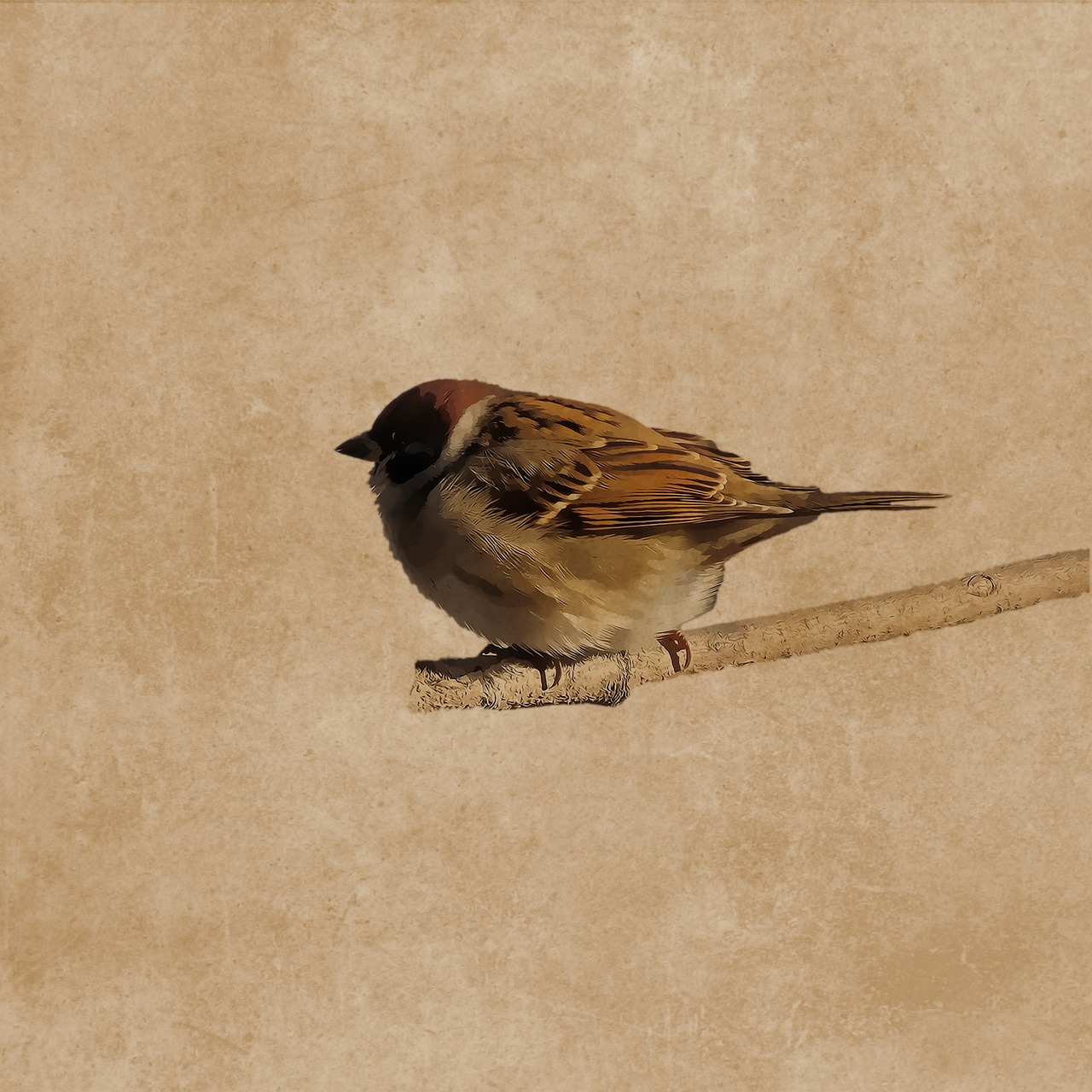
Using Grids for Structure
When it comes to drawing, many artists find themselves overwhelmed by the intricacies of complex scenes. This is where the grid technique comes into play, acting as a guiding framework that can transform chaos into clarity. Imagine trying to assemble a jigsaw puzzle without the picture on the box—daunting, right? Now, picture having a grid overlay that highlights where each piece fits. That’s the power of grids in art!
By dividing your canvas into smaller, manageable sections, grids allow you to focus on one area at a time, making it easier to maintain proportions and perspectives. This method is particularly beneficial when working with intricate details that can easily become distorted if approached haphazardly. The grid serves as a visual reference, helping you to accurately place elements in relation to one another.
To implement this technique, start by deciding on the size of your grid squares. Commonly, artists use a 1-inch by 1-inch grid, but you can adjust this based on the complexity of the scene and your personal preference. Here’s a simple breakdown of how to set it up:
| Step | Description |
|---|---|
| 1 | Choose your reference image and print it out or display it on a screen. |
| 2 | Overlay a grid on your reference image, marking each square clearly. |
| 3 | Create a corresponding grid on your drawing surface, ensuring the squares are the same size. |
| 4 | Focus on one square at a time, transferring the details from the reference to your drawing. |
As you work within each square, you’ll find that it’s much easier to capture the essence of the scene without getting lost in the details. This method not only enhances your accuracy but also boosts your confidence as you see your drawing come together piece by piece.
Furthermore, grids are not just for beginners. Even seasoned artists can benefit from this technique, especially when tackling particularly challenging compositions. It’s like having a safety net—no matter how complex the scene, you have a structured approach to guide you through the process.
In conclusion, using grids is a fantastic way to simplify complex scenes and improve your drawing skills. By breaking down the task into smaller parts, you can focus on accuracy and detail without feeling overwhelmed. So, grab that ruler and start gridding—your artwork will thank you!
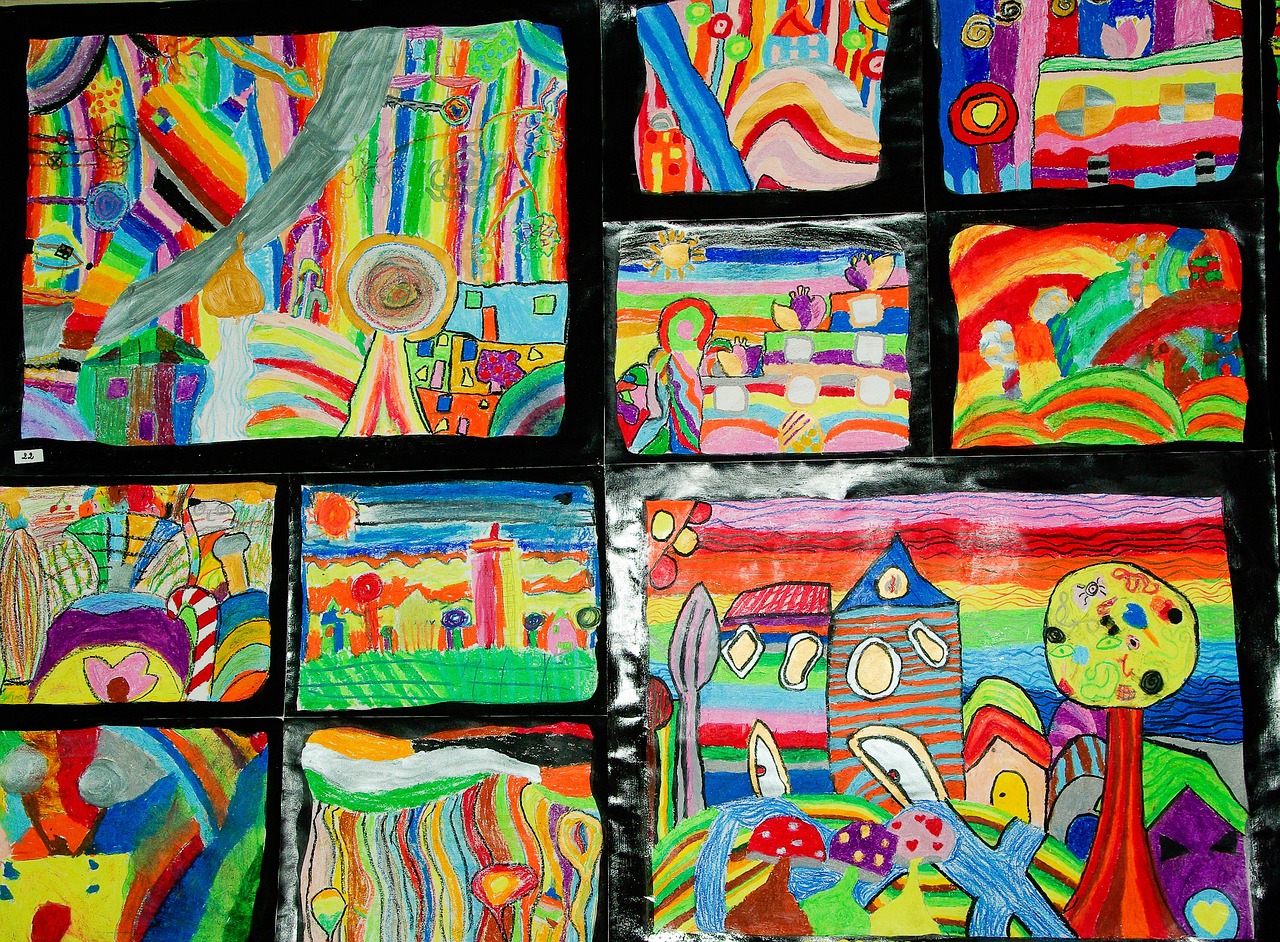
Contour Drawing Techniques
Contour drawing is an essential technique for artists looking to simplify complex forms into manageable outlines. By focusing on the edges and contours of a subject, artists can capture the essence of the scene without getting lost in intricate details. This technique not only enhances observational skills but also encourages a more fluid and spontaneous approach to drawing. Imagine tracing the outline of a beautiful mountain range; rather than getting bogged down by every rock and tree, you simply follow the peaks and valleys, creating a powerful representation of the landscape.
One of the most effective methods of contour drawing is the blind contour drawing. This technique involves drawing the contour of a subject without looking at your paper. It may sound daunting, but it’s a fantastic way to train your eyes and hands to work together. As you focus solely on the subject, your hand will naturally follow the lines, resulting in a drawing that captures the true form of the object. The beauty of this method lies in its imperfections; the resulting artwork is often full of character and spontaneity.
Another popular approach is the continuous contour drawing, where the artist draws the outline of a subject in one continuous line, without lifting the pencil from the paper. This technique encourages a sense of flow and rhythm, allowing the artist to engage more deeply with the subject. It’s reminiscent of dancing; each line you create is like a step in a choreography, leading you through the form of your subject. By practicing this technique, you’ll find that your hand becomes more confident and your lines more expressive.
For those who prefer a more structured approach, modified contour drawing can be a great alternative. In this method, artists can glance at their paper while drawing, which allows for a bit more control over the final outcome. This technique strikes a balance between the freedom of blind contour and the precision of traditional drawing. It’s like having the best of both worlds; you can retain the spontaneity of contour drawing while also ensuring that your proportions and shapes are accurate.
To get started with contour drawing, consider the following tips:
- Choose a simple subject: Start with objects that have clear outlines, like a chair or a fruit. This will make it easier to focus on the contours without overwhelming yourself.
- Limit your tools: Use a single pencil or pen. This restriction encourages you to focus on the lines rather than getting distracted by shading or colors.
- Practice regularly: Like any skill, contour drawing improves with practice. Set aside time each week to draw from life, focusing solely on contours.
Incorporating contour drawing techniques into your practice can significantly enhance your ability to simplify complex scenes. As you become more comfortable with capturing the essence of your subjects through their outlines, you’ll find that your overall drawing skills improve. It’s a liberating experience, allowing you to express your creativity without the constraints of perfectionism.
What is contour drawing?
Contour drawing is a technique where artists focus on the outlines and edges of a subject, capturing its form without getting distracted by details.
How can I improve my contour drawing skills?
Regular practice, starting with simple subjects, and experimenting with techniques like blind and continuous contour drawing can help improve your skills.
Is contour drawing suitable for beginners?
Absolutely! Contour drawing is a great way for beginners to develop their observational skills and gain confidence in their drawing abilities.

Reducing Detail Strategically
When it comes to drawing, one of the biggest challenges artists face is knowing how to reduce detail without losing the essence of their work. It's easy to get caught up in the minutiae of a scene, obsessively adding every little shadow and highlight. However, the magic often lies in the ability to step back and ask, "What is essential?" By strategically reducing detail, you not only simplify the drawing process but also enhance the overall impact of your artwork.
First, consider the purpose of your drawing. Are you aiming to convey a specific mood or message? Or perhaps you want to focus on a particular subject? Understanding your goal will help you determine which details are vital and which can be omitted. For instance, if you're drawing a bustling street scene, you might want to capture the energy and movement rather than every brick in a building. This approach allows you to create a more dynamic composition.
Another effective strategy is to identify the key elements that contribute to the scene's story. Think of these elements as the pillars of your composition. By concentrating on these core aspects, you can create a strong foundation for your artwork. For example, if you're sketching a portrait, focus on the eyes and mouth, which are often the most expressive features, while simplifying the background and other details. This method not only enhances clarity but also draws the viewer's attention exactly where you want it.
Additionally, embracing abstraction can be a powerful tool in reducing detail. Instead of trying to replicate every texture and nuance, consider how you can represent forms through simplified shapes and colors. This technique not only saves time but also encourages creativity. Think of it as painting with broad strokes rather than fine lines; it allows for a more expressive and emotional representation of your subject.
To help illustrate these concepts, here’s a simple table that outlines some common strategies for reducing detail in your artwork:
| Strategy | Description |
|---|---|
| Identify Key Elements | Focus on the main subjects that tell the story of your scene. |
| Embrace Abstraction | Use simplified shapes and colors to represent forms. |
| Limit Color Palette | Choose a few colors that convey the mood instead of overwhelming the viewer. |
| Use Negative Space | Incorporate empty spaces to enhance focus on the main subjects. |
Lastly, remember that practice makes perfect. The more you experiment with reducing detail, the more instinctive it will become. Try setting aside a sketching session where your only goal is to simplify. Challenge yourself to create a drawing that conveys the same message as your detailed works but with fewer lines and less complexity. Over time, you'll develop a keen eye for what truly matters in your art.
- How do I know what details to keep and what to remove? Start by identifying the main message or emotion you want to convey. Focus on elements that support that theme.
- Can reducing detail affect the overall quality of my artwork? Not at all! In fact, strategic simplification can enhance your work by making it more powerful and focused.
- Is it okay to practice simplification with different mediums? Absolutely! Experimenting with various mediums can help you discover new ways to simplify and enhance your style.
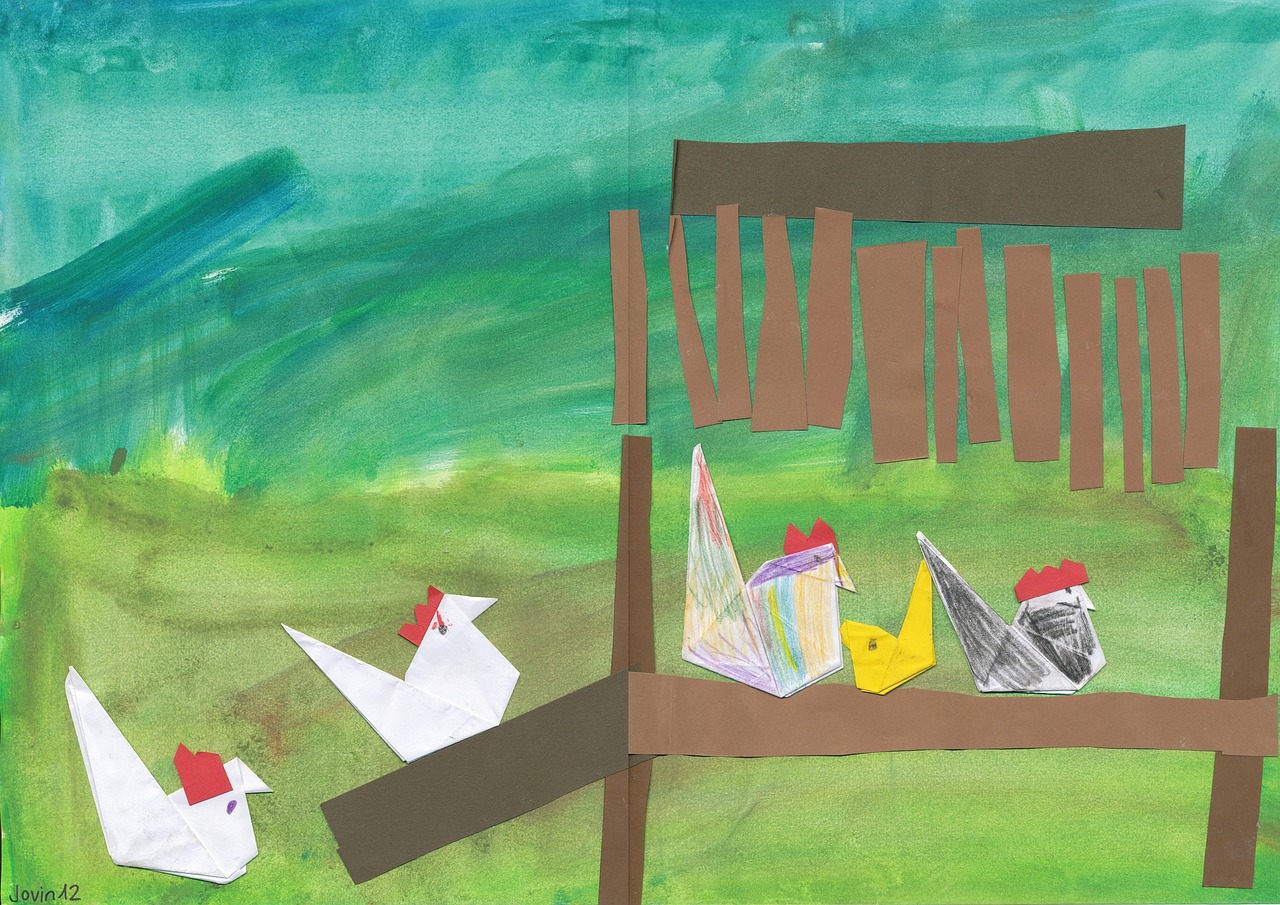
Applying Color and Value
When it comes to simplifying complex scenes, color and value are your best friends. Think of them as the secret sauce that can transform a chaotic jumble of shapes into a harmonious masterpiece. By understanding how to use these elements effectively, you can not only enhance the clarity of your artwork but also guide the viewer's eye to where you want it to go. So, how do you harness the power of color and value to simplify your drawings?
First off, let’s break it down. Color isn’t just about picking pretty shades; it’s about creating a mood and directing attention. For instance, using a bright, warm color can draw the viewer in, while cooler, muted tones can recede into the background. Think of a sunset – the vibrant oranges and reds pull you in, while the cooler blues of the sky create depth. To simplify a scene, consider using a limited color palette that emphasizes your focal points while keeping other areas subdued. This technique not only reduces visual clutter but also helps maintain a cohesive look.
Now, let’s talk about value. Value refers to how light or dark a color is, and it plays a crucial role in establishing depth and dimension in your artwork. By manipulating value, you can create a sense of volume and space, making complex scenes easier to interpret. For example, if you're drawing a forest, darker values can indicate the shadows cast by trees, while lighter values can represent sunlight filtering through leaves. This contrast not only simplifies the scene but also adds an element of drama and interest.
One effective strategy is to create a value scale before starting your drawing. This can be as simple as a gradient from light to dark, which will help you visualize how to apply value across your scene. Below is a basic example of a value scale:
| Value Level | Example |
|---|---|
| 1 (Lightest) | |
| 2 | |
| 3 | |
| 4 | |
| 5 (Darkest) |
By referring to this scale, you can ensure that your values are consistent and effective throughout your drawing. Remember, the key is not to get bogged down by every detail but to focus on the overall composition. Use value to define shapes and create a sense of depth, making it easier for the viewer to navigate your artwork.
In addition to color and value, consider the concept of focal points. Establishing focal points within your artwork is crucial for guiding the viewer’s eye. You can achieve this by using contrasting colors or values in specific areas of your scene. For example, if you have a busy landscape, making a particular tree brighter or darker than its surroundings will naturally draw attention to it. This technique not only simplifies your composition but also enhances the storytelling aspect of your artwork.
Finally, don’t underestimate the power of negative space. The areas around your subjects can be just as important as the subjects themselves. By leaving certain areas more open and less detailed, you can create a sense of balance and allow the viewer's eyes to rest. It’s like breathing room for your artwork, making it easier to digest and appreciate.
In conclusion, applying color and value effectively can transform your complex scenes into beautiful, simplified compositions. By focusing on these elements, you can enhance clarity, create depth, and guide the viewer’s eye, ultimately elevating your drawing skills to new heights.
- What is the best way to choose a color palette for my drawing? Start by selecting a few colors that resonate with the mood you want to convey. Use a color wheel to find complementary colors that work well together.
- How can I improve my understanding of value? Practice creating value scales and study the light and shadow in real-life objects. This will help you see how value affects form and depth.
- Should I always use a limited color palette? While a limited palette can simplify your work, don’t be afraid to experiment. Sometimes, a vibrant mix can add energy and interest to your piece.
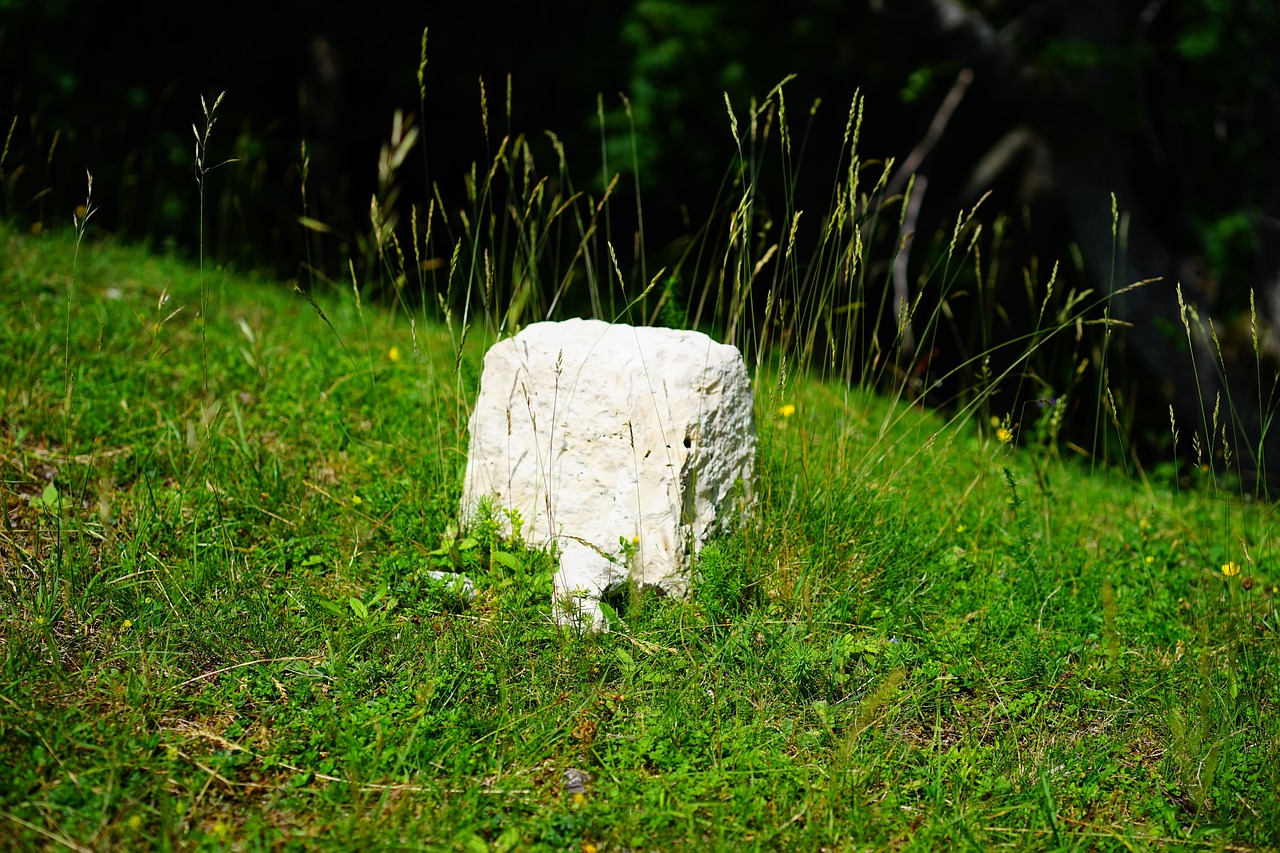
Creating Focal Points
When it comes to drawing, is like setting the stage for a captivating performance. Just as a spotlight highlights the lead actor in a play, focal points draw the viewer's attention to the most important parts of your artwork. Without these focal points, your piece can feel chaotic and overwhelming, leaving the audience unsure of where to look. So, how do we create these magical spots that guide the viewer's eye and simplify our complex scenes?
First off, it’s essential to understand that a focal point doesn’t just appear out of thin air; it’s crafted through a combination of color, contrast, and composition. Think of it as a recipe where each ingredient plays a vital role. For instance, using a bright color in a muted scene can instantly grab attention. Similarly, placing a detailed area against a less detailed background can create a striking contrast that makes your focal point pop!
One effective technique for establishing focal points is through the use of leading lines. These are lines that naturally guide the viewer's eye toward the focal area. Imagine a winding path in a landscape drawing that leads to a beautifully rendered tree in the distance. The path acts as a guide, encouraging the viewer to follow it to the focal point. You can create leading lines with various elements in your scene, whether they are roads, rivers, or even the direction of light.
Another method is to utilize size and scale. Larger objects tend to attract more attention than smaller ones. If you have a complex scene filled with various elements, consider making your focal point the largest object. This not only helps in simplifying the scene but also creates a natural hierarchy that the viewer instinctively understands. For example, in a bustling street scene, a giant clock tower can serve as a focal point, towering over the smaller buildings around it.
In addition to these techniques, think about the placement of your focal points. The rule of thirds is a classic guideline that can be very helpful. By dividing your canvas into a grid of nine equal parts, you can place your focal points along the lines or at the intersections. This creates a more dynamic composition and naturally draws the viewer’s eye to those areas. It’s like arranging furniture in a room; the right placement can make all the difference!
Lastly, don’t forget about the power of negative space. By surrounding your focal point with ample negative space, you give it room to breathe, making it stand out even more. Think of it as giving your star performer a stage with no distractions, allowing them to shine. This technique not only simplifies the scene but also enhances the overall composition.
In summary, creating focal points is about intentionality and strategy. By using color, contrast, leading lines, size, placement, and negative space, you can effectively guide your viewer’s eye and simplify complex scenes. Remember, your artwork should tell a story, and focal points are the key to ensuring that story is clear and engaging.
- What is a focal point in drawing? A focal point is the area in a drawing that attracts the viewer's attention, often achieved through color, contrast, and placement.
- How can I create a focal point? You can create a focal point by using techniques such as leading lines, size and scale, and negative space.
- Is it necessary to have a focal point in every artwork? While not every artwork requires a focal point, having one can enhance clarity and guide the viewer's experience.

Utilizing Negative Space
When it comes to drawing, many artists often overlook a powerful concept that can transform their work: negative space. But what exactly is negative space? In simple terms, it refers to the area surrounding the main subject of your artwork. Instead of solely focusing on the object you want to depict, paying attention to the space around it can lead to a more balanced and visually appealing composition. Think of it like the silent partner in a conversation; while they may not be the center of attention, their presence can significantly influence the overall dynamic.
By embracing negative space, you can achieve a few key benefits in your drawings:
- Enhanced Composition: Negative space can help guide the viewer's eye towards the focal points of your artwork. By strategically placing your subjects within the negative space, you create a natural flow that draws attention where it’s needed most.
- Clarity and Focus: Sometimes, less is more. By reducing clutter and focusing on the negative space, you allow your main subject to shine without distractions. This clarity can evoke stronger emotions and messages in your art.
- Depth and Dimension: Negative space can add a sense of depth to your drawings. By creating a contrast between the subject and its surroundings, you can give the illusion of three-dimensionality, making your artwork feel more alive.
So, how can you effectively incorporate negative space into your drawing practice? Here are a few techniques to get you started:
- Observation: Take a moment to study your surroundings. Notice how the spaces around objects interact with them. This practice can help you become more aware of negative space in your own work.
- Sketching with Intention: When you start a drawing, consider the negative space first. Lightly sketch the areas around your subject before adding details to the subject itself. This can help you maintain a balanced composition.
- Use Color Wisely: If you're adding color to your artwork, think about how the colors of the negative space can complement or contrast with your subject. This can enhance the overall impact of your piece.
In conclusion, utilizing negative space is not just a technique; it's a mindset shift that can elevate your drawing skills to new heights. By recognizing the importance of the areas around your subjects, you can create more dynamic, engaging, and visually striking artworks. Remember, the next time you pick up your pencil, take a moment to appreciate the silent partner of your composition—negative space might just be the key to unlocking your artistic potential!
Q: What is negative space in art?
A: Negative space refers to the area surrounding and between the subjects of an artwork. It plays a crucial role in defining shapes and creating a balanced composition.
Q: How can I practice using negative space?
A: You can practice by focusing on the spaces around objects in your environment, sketching those areas first, and experimenting with how they interact with your subjects.
Q: Does negative space apply to all forms of art?
A: Yes, negative space can be applied to various forms of art, including painting, photography, and sculpture. It’s a universal concept that enhances visual composition.
Q: Can negative space improve my drawing skills?
A: Absolutely! By incorporating negative space into your practice, you can improve your composition, clarity, and overall artistic expression.
Frequently Asked Questions
- What are the key elements that contribute to complexity in drawing?
Complexity in drawing often arises from a combination of intricate shapes, varying textures, and diverse perspectives. By recognizing these elements, artists can better analyze and simplify their scenes, making the drawing process more manageable.
- How can I break down complex scenes into simpler shapes?
Start by identifying basic geometric forms within your subject. Look for circles, squares, and triangles that can serve as the foundation for your drawing. This method not only simplifies the process but also helps maintain accurate proportions throughout your artwork.
- What role do grids play in simplifying complex drawings?
Grids act as a structural guide, allowing artists to maintain proportions and spatial relationships within their work. By overlaying a grid on your reference image and your drawing surface, you can focus on one section at a time, simplifying the overall process and enhancing accuracy.
- What are contour drawing techniques and how can they help?
Contour drawing emphasizes the outlines of subjects, which can simplify complex forms. Techniques like continuous line drawing encourage artists to focus on the shape and flow of their subject without getting bogged down by details, enhancing observational skills in the process.
- When is it appropriate to reduce detail in a drawing?
Reducing detail is essential when it distracts from the overall composition or focal points. By strategically omitting unnecessary elements, you can maintain the essence of the scene while creating a cleaner, more impactful artwork.
- How can color and value simplify complex scenes?
Using color and value strategically helps draw attention to key areas of your artwork. By establishing a clear hierarchy of colors and values, you can enhance clarity and focus, guiding the viewer's eye through your composition while simplifying visual complexity.
- What techniques can I use to create focal points in my drawings?
To create focal points, consider using contrasting colors, varying levels of detail, or strategic placement within the composition. These techniques help direct the viewer's attention to important areas, simplifying the overall visual experience.
- How does negative space contribute to simplification?
Negative space refers to the area surrounding your subject. By incorporating negative space effectively, you can enhance composition and reduce visual clutter, allowing the main subject to stand out and making the overall drawing easier to comprehend.



















